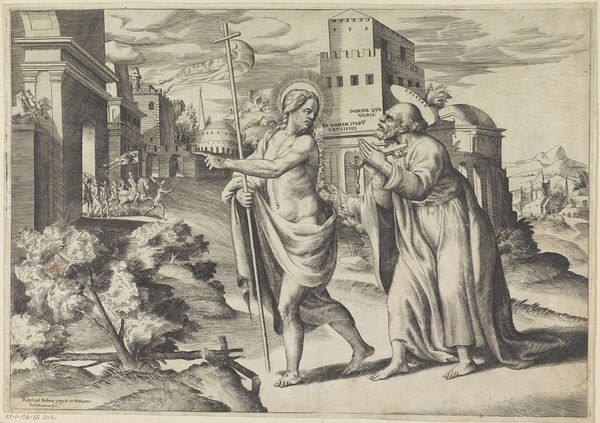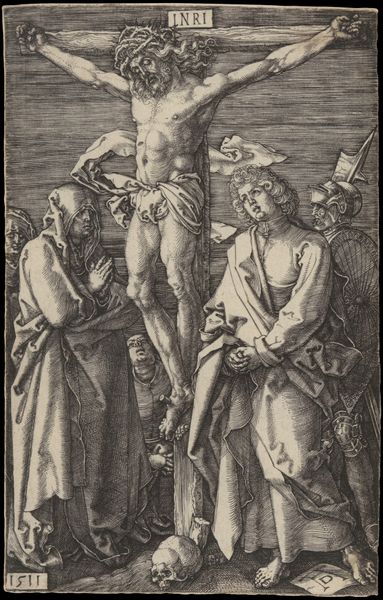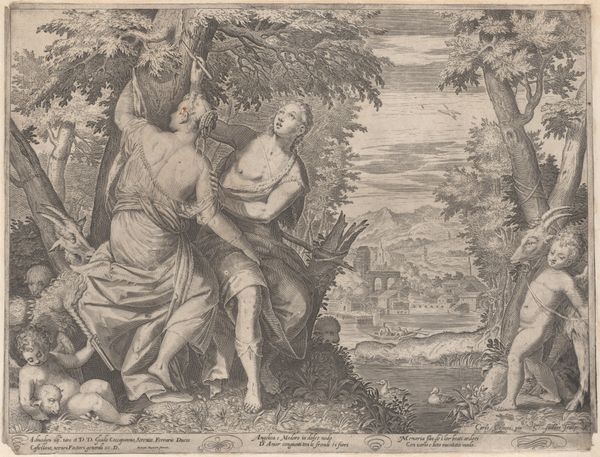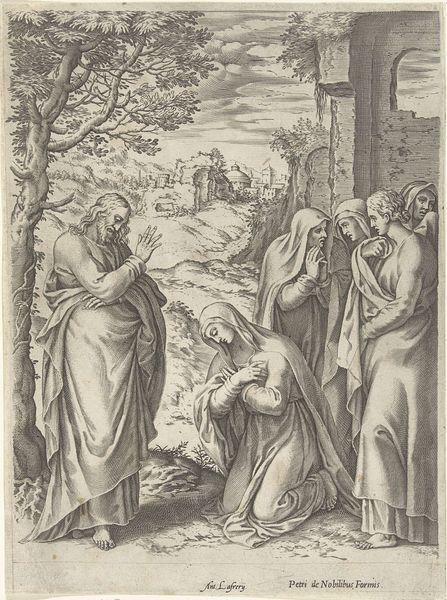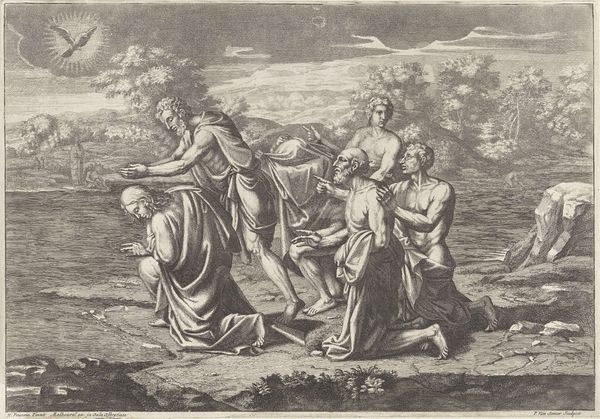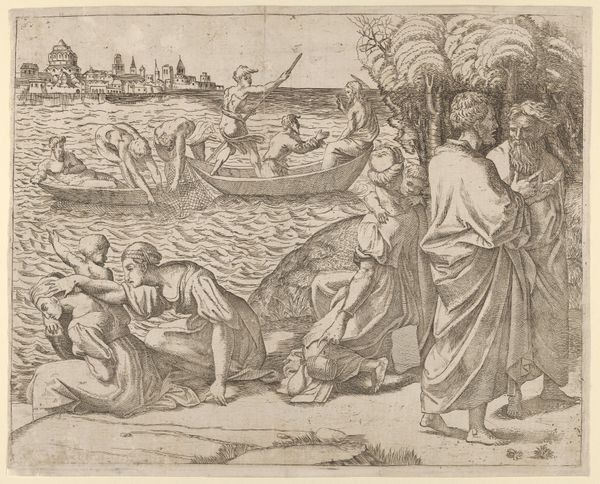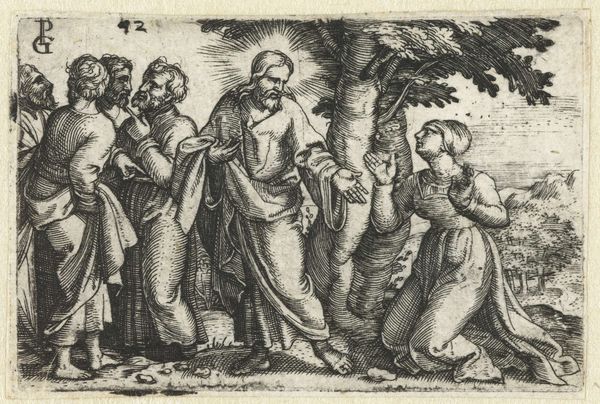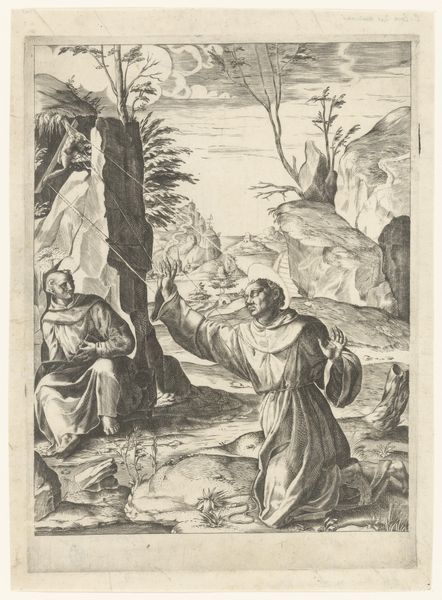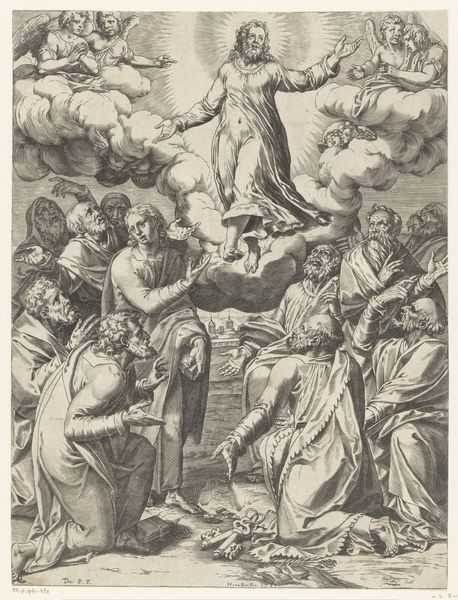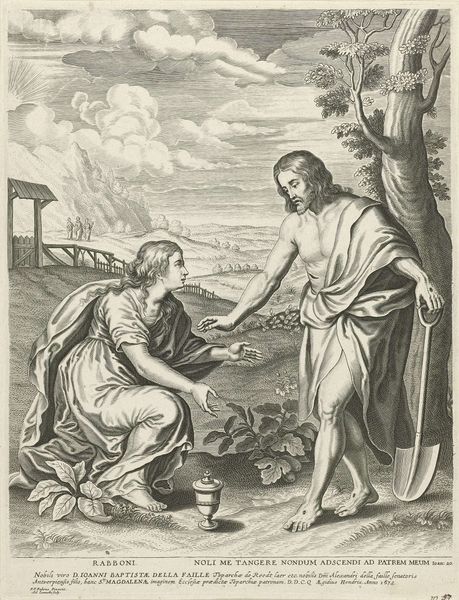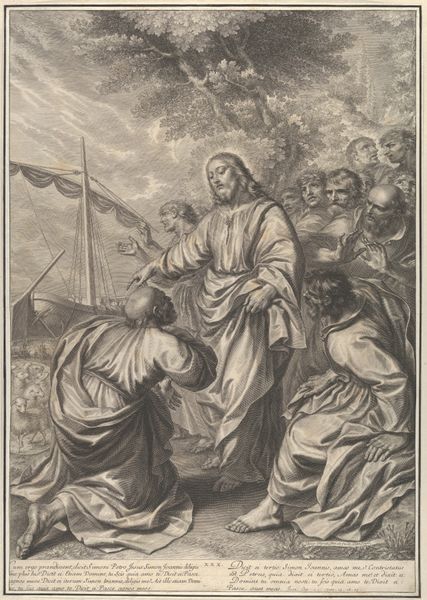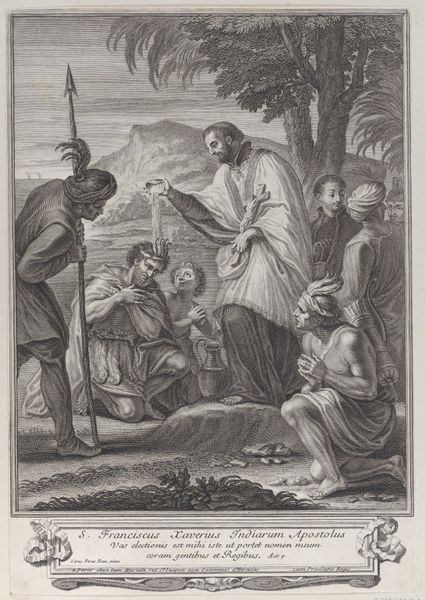
painting, oil-paint
#
baroque
#
painting
#
oil-paint
#
landscape
#
figuration
#
oil painting
#
group-portraits
#
genre-painting
#
history-painting
Dimensions: overall: 64.2 x 77.1 cm (25 1/4 x 30 3/8 in.) framed: 75.5 x 88.9 x 4.4 cm (29 3/4 x 35 x 1 3/4 in.)
Copyright: National Gallery of Art: CC0 1.0
Editor: This is "Christ on the Road to Emmaus," painted around 1725-1730 by an anonymous artist using oil paint. The figures seem to blend a bit with the landscape, almost like they’re emerging from it. I’m struck by how commonplace the scene feels. What aspects stand out to you? Curator: Considering its materiality, notice how the coarse weave of the canvas subtly impacts the texture and reception of the image. Look closer at the pigment choices and the layering techniques. Oil paint, a commodity in the 18th century, wasn't universally accessible. How might the anonymous artist’s access to resources and materials influenced the work's overall composition? Editor: I hadn’t thought about that! Does the way they used fairly common materials suggest a specific market or audience they were trying to reach? Was it typical to see religious paintings employing what appears to be affordable techniques? Curator: Exactly. Let's also consider the social context. Genre painting depicting religious themes was common, produced often in workshops, catering to individual patrons. Notice how the landscape doesn't follow established stylistic standards? The materials themselves are not inherently expressive but through the artist's labor and choices, they are used for consumption as an devotional object, thus reflecting religious doctrine and social customs. How do you interpret the combination of everyday materials with the more "high art" subject matter? Editor: It makes me think about accessibility, about trying to reach people in their everyday lives with this story. That the value comes less from the materials and more from the narrative itself. Curator: Precisely. It reflects how artistic labor transforms simple materials into something of cultural value. We can consider art not as mere decoration, but as a product of social and economic forces. Editor: This materialist perspective really changes how I see the painting, it opens it up to questions of labor, access and artistic skill. Curator: Indeed, appreciating these elements allows us to look beyond the surface and connect with the work on a more grounded level.
Comments
No comments
Be the first to comment and join the conversation on the ultimate creative platform.
